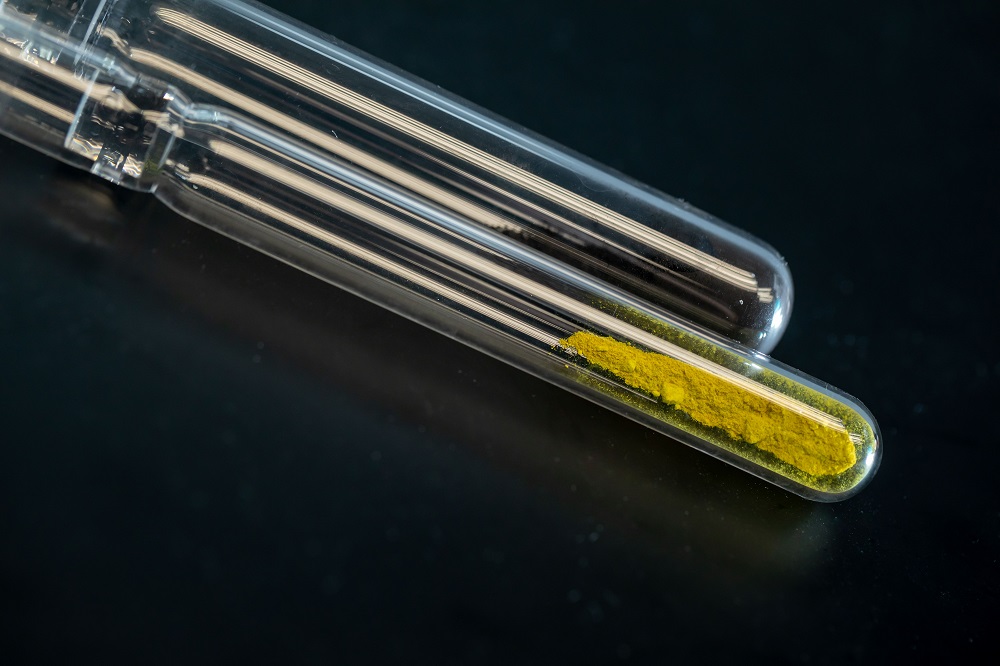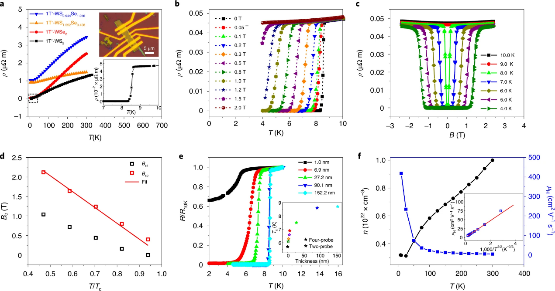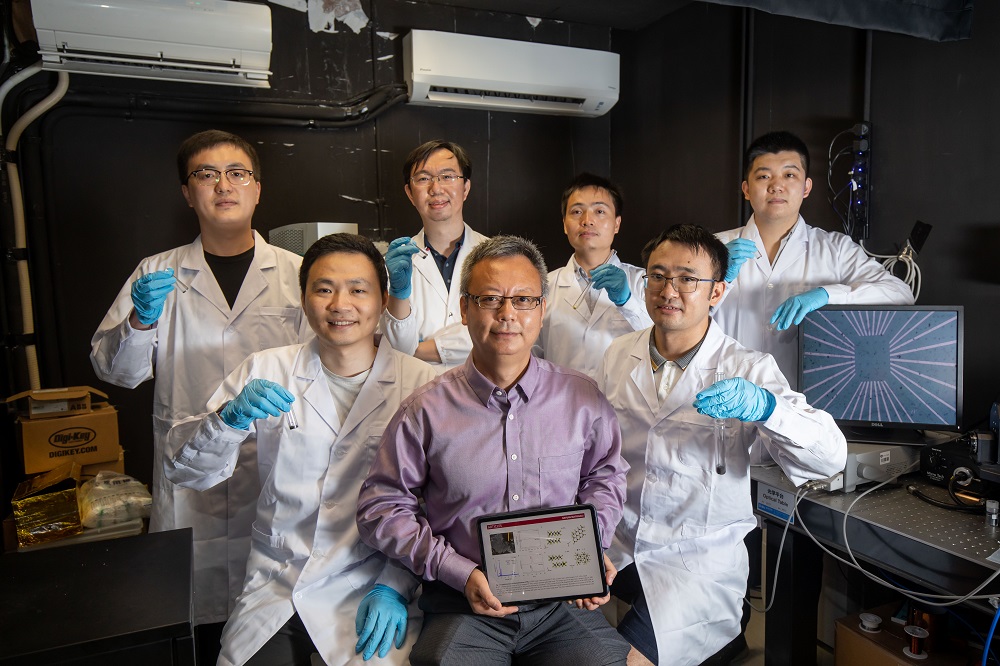Innovative synthesis technique to unveil the crystal structures of next-generation TMD nanomaterials
Apart from graphene, transition metal dichalcogenides (TMDs) with various unconventional metastable phases are regarded as one of the most promising novel two-dimensional (2D) nanomaterials. Due to the complexity and diversity of their crystal structures, it has been difficult for scientists to synthesise high-purity unconventional metastable TMDs for scientific research and applications. A collaborative research team led by scientists from the City University of Hong Kong (CityU) recently overcame the barrier by developing a novel synthesis technique that combines the advantages of closed-system preparation of precursors and gas-solid reaction to produce a number of high-quality and pure unconventional metastable TMD materials in large quantities. Researchers have also successfully solved the single crystal structures of four of them, which is critical in the further fundamental study and practical application.
The research team believes that this innovative synthesis technique will inspire more scientists to explore the unconventional phases of nanomaterials. By further conducting in-depth studies on the unique properties of these nanomaterials, researchers could witness their infinite possibilities in practical applications in optoelectronics, energy storage, condensed matter physics, etc.
The research was jointly led by Professor Zhang Hua, Herman Hu Chair Professor of Nanomaterials from the Department of Chemistry at CityU and Dr Kedar Hippalgaonkar from Nanyang Technological University (NTU) and Institute of Materials Research and Engineering (IMRE), A*STAR (Agency for Science, Technology and Research) in Singapore. The findings have been published on Nature Materials with the title of “Metastable 1T′-phase group VIB transition metal dichalcogenide crystals”.
The two-dimensional (2D) layered materials have been a hot topic of scientific research in recent years because of their unique physicochemical properties, as well as the ability to isolate single-layer nanosheets from them. In addition to graphene which has been widely studied, TMDs, a new family of 2D layered nanomaterials, have also attracted much attention, especially the octahedral (1T-phase) and distorted octahedral (1T′-phase) TMDs with metastable (thermodynamically unstable) structures. Owing to their (semi-)metallic property, these TMDs show great potential in a variety of applications.
The crystal structures of TMDs are often complicated and varied with many different phases. The unconventional-phase TMDs mentioned above are metastable materials, meaning that they are not thermodynamically stable. This instability makes it difficult for scientists to study them. This is because no matter in nature or in the laboratory, unconventional-phase TMD materials usually appear in mixtures with different crystal structures, which are not pure and not conducive to the scientific study of their intrinsic physical and chemical properties.

Scientists from all over the world have tried different synthesis methods for these unconventional-phase TMD materials, including chemical/electrochemical alkali metal ion intercalation, colloidal synthesis, hydrothermal synthesis, electron beam irradiation, mechanical strain, plasmonic hot electron or chemical vapour deposition, etc. Still, the obtained products are often of poor quality and the yields are far from adequate for applications.

In this study, the research team led by CityU managed to develop an innovative way to solve the aforementioned challenge after unremitting efforts. The key to the breakthrough was that the team discovered a unique type of precursor, which played a crucial role in the gas-solid reaction for the synthesis of unconventional 1T′-phase TMD materials.
But it is difficult to prepare such kind of precursors. After many attempts, the team finally overcame the barrier by using vacuum-sealed ampoules (sealed and seamless quartz tubes) as the reaction vessels for the raw materials and succeeded in producing a series of important precursors under a high-temperature environment. The researchers then used these precursors in a gas-solid reaction with a mixture of H2 and Ar for large-amount synthesis of six unconventional 1T′-phase TMD crystals with high quality and purity in a highly efficient manner.

After obtaining these high-quality and pure TMD crystals, the researchers characterised them in detail by using the advanced “single-crystal X-ray diffraction technique” and successfully solved the single-crystal structures of four unconventional 1T′ phase TMDs, namely WS2, WSe2, MoS2 and MoSe2, and unveiled their mysterious structures. This breakthrough in synthesis technology is expected to facilitate the research in materials science, crystallography, physics and chemistry.
The researchers also conducted superconductivity tests on the synthesised unconventional 1T′ phase WS2 (tungsten disulfide) material. These tests not only confirmed that it is an excellent superconductor but also found that its “superconducting transition temperature” is strongly correlated with its thickness.

The experiments showed that the superconducting transition temperature is 8.6 K at the thickness of 90.1 nm. However, when the material is thinned to single-layer (atomic) thickness, the superconducting transition temperature decreases to 5.7 K. “This means that it is a typical two-dimensional superconductor and is one of the best TMD-based superconductors to date,” said Professor Zhang.
Compared with other synthesis methods documented in the scientific literature, the new TMD synthesis method developed by CityU’s team is more efficient and has better general applicability that can be widely used, added Professor Zhang. He believes that this new synthesis method will facilitate the large-scale preparation of more high-purity unconventional-phase TMD materials in the future, providing important source materials for future fundamental and applied research to explore the intrinsic physicochemical properties of these new materials and their potential applications.
“These findings greatly expand the scope of research and application of Phase Engineering of Nanomaterials (PEN), and also pave the way for future exploration of the phase-dependent physicochemical properties of nanomaterials, as well as laying the cornerstone for the development of practical applications based on PEN,” said Professor Zhang.

The corresponding authors of this study are Professor Zhang and Dr Hippalgaonkar. The first authors are Dr Lai Zhuangchai, a postdoctoral fellow from CityU’s Chemistry Department, Dr He Qiyuan, Assistant Professor from CityU’s Department of Materials Science and Engineering, Ms Thu Ha Tran from NTU and Dr D. V. Maheswar Repaka from IMRE in Singapore. The team also includes 21 other researchers from 8 universities and research institutes.
DOI number: 10.1038/s41563-021-00971-y
